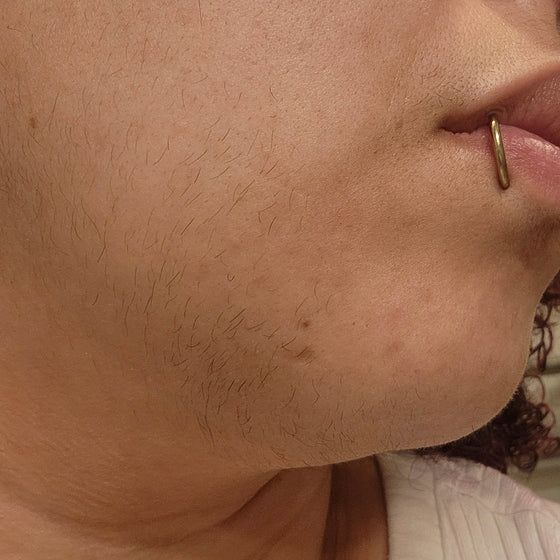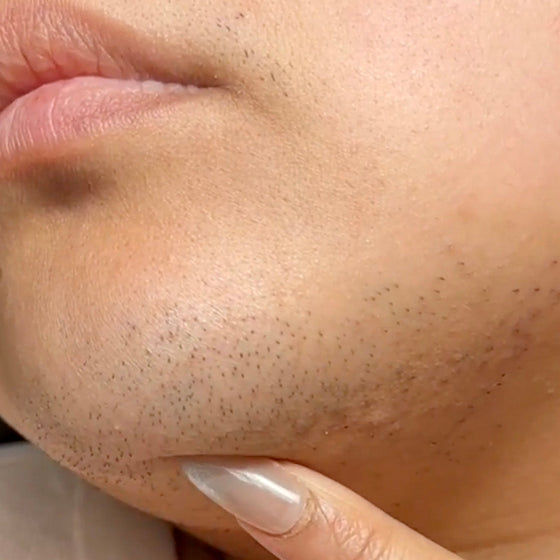Ditching the razor and avoiding annoying stubble days is literally the stuff of dreams. That's where laser hair removal comes in. Everyone from Kim Kardashian to Victoria Beckham loves it – so let's shed some light on the average cost of laser hair removal and if it's right for you.
What is Laser Hair Removal?
Before we sling some numbers around, it's best we quickly touch on what laser hair removal is. It's a medical procedure that uses a concentrated beam of light (laser) to remove unwanted hair. Unlike old-school shaving, the highly effective laser emits a light that absorbs the pigment in the hair. With time, it basically damages each hair follicle and prevents future growth leaving you with silky smooth skin.
However, listen up, it's not a one zap fits all type treatment. Laser hair removal is picky – you need to check your hair root color and skin tone make you an ideal candidate for this method of hair permanent removal.
What is the cost of Laser Hair Removal?
Let's just say you'll drop a few notes if you go down this hair-free path. Laser hair removal is not a one-off process. You'll need to pay for six to eight treatments (for your chosen area) at intervals of 3-6 weeks. How many treatments you'll need totally depends on anything from hormones to genetics and even race.
In 2018 the Plastic Surgery Statistics Report found the average fee in the USA for laser hair removal is $285. Assuming you follow the minimum required six sessions, you'll pay $1,710. On average, the price for a brazilian laser hair removal treatment sits at $205 per session – that's a total of $1,640 for eight sessions in one area alone. Strangely, male pubic laser hair removal costs a little more at $218 per session. In fact, laser hair removal for men tends to always cost more.
Also, FYI. If you're in the market for hair-free legs, lip, underarms and brazilian then expect to pay $6,288 for eight sessions targeting each of those areas.
Curveball: remember you need to go back for sessions in the future to maintain your permanent hair removal. Yep, the cost of this form of excess hair removal is high.
Why does Laser Hair Removal cost so much?
So now you know laser hair removal costs as much as a YSL purse, it's time to uncover why. The location of laser hair removal salons or clinics will influence the price. For example, an average laser clinic in the state of Connecticut costs much more than one in Florida. The same can be said of other countries as demand, supply, competition and population impact the price of laser hair removal treatments.
The average price for laser hair removal is mainly due to the expense of investing in the technology. Market leading machines can cost up to $100,000 and then the cost of rent, business rates, insurance and staff needs to be factored in too. Such high overheads are then passed on to customers in the form of expensive treatments.
Is Laser Hair Removal better than IPL?
Firstly, IPL laser hair removal doesn't technically use laser (ie. one beam of light like laser hair removal) yet it is often called laser hair removal. Think of it as laser hair removal's cool cousin. It's also worth noting IPL is not as intense as laser hair removal – this means you need more treatments to see results, but you also are likely to experience less pain with each treatment. A nice payoff.
Let's put it like this; think back to when you bought your first car, someone probably said: "It doesn't matter, as long as it gets you from A to B." The same can be said of laser hair removal and IPL. Both do the exact same thing and you will get the exact same results with both methods of hair removal – the only difference is IPL will take you a little longer to get there, but for a fraction of the price (and a lot less pain).
In fact, one study has shown IPL has less side effects and a higher satisfaction score compared to a form of laser hair removed called Nd:YAG. I mean, we aren't mathematicians, but like *Kimmy K once said: "Why pay $6,288 to laser your entire body when you can do it for less with the RoseSkinCo™ IPL Laser Hair Removal Handset?"
*Okay, Kimmy K totally did not say that. But she's smart and a low-key almost lawyer, so we bet she would. Maybe.
Ps. While we don't have a Kardashian-Jenner review up our sleeves, we do have 50,000+ official reviews for you to check out.






